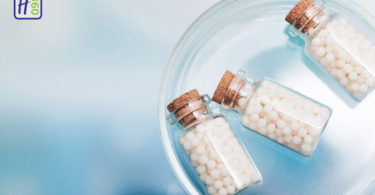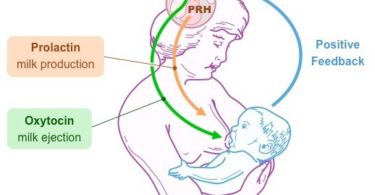Introduction
Infertility, whether male or female, is defined as the inability of a couple to achieve conception or bring a pregnancy to term after a year or more of regular, unprotected sexual intercourse.
According to WHO, between 2 and 10% of couples worldwide are unable to conceive a child and a further of 10-25% experience secondary Infertility
Becoming pregnant is not that easy even for people who do not have fertility problems, human being is one of the least fertile creature on earth.
Keywords: Infertility, types of infertility, causes, investigation of infertility, management by homoeopathic medicine.
Definition :: Infertility is defined as a failure to conceive within one or more years of regular unprotected coitus.
Types
1.Primary infertility ::denotes those patients who have never conceived.
2Secondary infertility :: indicates previous pregnancy but failure to conceive subsequently.
causes of infertility :
1.physiological
2 . pathological
Physiologycal causes
a. Before menarche
b. After manopause
c.pregnancy unlikely up to 10 week of postpartum
Pathological causes
1. Faults in male
(A)Defective spermatogenesis
-undescended testes
-vericocele or big hydrocele
-mumps orchitis
-thyroid dysfunction
-diabetes
(B) Obstruction of the efferent duct system
-tubercular
-gonococcal
-during herniorrhaphy
(C) Failure to deposit sperm high in the vagina
-impotency
-premature or absence of ejaculation
-hypospadias
(D)Errors in the seminal fluid.
-low fructose content
-high prostaglandin content
-undue viscosity.
2 . Faults in female
(A)Ovarian factors:
– Anovulation or oligo-ovulation.
-Decreased ovarian reserve.
-Luteal phase defect (LPD).
– Luteinized unruptured follicle (LUF).
(B)Tubal factors
-impaired tubal function includes defective ovum pick up,impaired tubal motility,loss of cilia and partial to complete obstruction of tube
– infection of tube
– pelvic endometriosis
(C)Uterine factor
-unfavourable endometrium for nidation
-chronic endometritis
-fibroid
-synechiae
-congenital malformation
(D)Cervical factor
-ineffective sperm penetration
-chronic cervicitis
-immunological factor (presence of antisperm antibody)
(E)Pelvic causes
-endometriosis
Combined factors
-General factors : Advanced age of the wife beyond 35 is related but spermatogenesis continues throughout life although aging reduces the fertility in male also.
-Apareunia and dyspareunia
-anxiety and apprehension
-use of lubricants during intercourse which may be spermicidal
-immunological factor
INVESTIGATIONS
Male investigation
1) Routine investigations include urine and blood examination including postprandial sugar.
2) Seminal fluid analysis
3) Serum FSH,LH,testosterone and TSH
4) Fructose content in the seminal fluid
5)Testicular biopsy
6)Sex chromatin study
7)Immunological tests
8)Presence of plenty of pus cell requires prostatic massage and the collected fluid is to be examined by staining and culture to detect the organisms.
FEMALE INVESTIGATIONS
DIAGNOSIS OF OVULATION
-menstrual history
-evaluation of peripheral or endorgan changes
-BBT
-cervical mucus study
-Vaginal cytology
-hormone estimation
-serume progesterone
-serume LH
-Serum oestradiol
-endometrial biopsy
-sonography
-Laproscopy
TUBAL Investigation
-insufflation test
-hysterosalpingography
-Laproscopy
CERVICAL Investigation -post coital test
-sperm cervical mucus contact test.
Homoeopathic Management of Infertility
1.AGNUS CASTUS
Male
Yellow discharge from urethra. No erections. Impotence. Parts cold, relaxed. Desire gone . Scanty emission without ejaculation. Loss of prostatic fluid on straining. Gleety discharge. Testicles, cold, swollen, hard, and painful.
Female
Scanty menses. Abhorrence of sexual intercourse. Relaxation of genitals, with leucorrhœa. Agalactia; with sadness. Sterility. Leucorrhœa staining yellow; transparent. Hysterical palpitation with nose bleed.
2.CALADIUM
Male
Pruritus. Glans very red. Organs seem larger, puffed, relaxed, cold, sweating; skin of scrotum thick. Erections when half-asleep; cease when fully awake. Impotency; relaxation of penis during excitement. No emission and no orgasm during embrace.
Female
Pruritus of vulva and vagina during pregnancy Voluptuousness. Cramp pains in uterus at night.Epilectic attacks during excitement and at time of menses.
3.LYCOPODIUM CLAVATUM
Male
No erectile power; impotence. Premature emission . Enlarge prostate.old men with strong desire but imperfect erection.panis is small,relaxed and cold.
Female
Menses too late; last too long, too profuse. Vagina dry. Coition painful. Right ovarian pain. Varicose veins of pudenda. Leucorrhœa, acrid, with burning in vagina. Discharge of blood from genitals during stool.
4.SELENIUM
Male
Dribbling of semen during sleep. Dribbling of prostatic fluid. Irritability after coitus. Loss of sexual power, with lascivious fancies. Increases desire, decreases ability. Semen thin, odorless. Sexual neurasthenia. On attempting coition, penis relaxes. Hydrocele.
5.STAPHYSAGRIA
Male
Especially after self-abuse; persistent dwelling on sexual subjects. Spermatorrhœa, with sunken features; guilty look; emissions, with backache and weakness and sexual neurasthenia. Dyspnœa after coition.
Female
Parts very sensitive, worse sitting down . Irritable bladder in young married women. Leucorrhœa. Prolapsus, with sinking in the abdomen; aching around the hips.
6.ONOSMODIUM
Male
Constant sexual excitement. Psychical impotence. Loss of desire. Speedy emissions. Deficient erections.
Female
Severe uterine pains; bearing-down pains; old pains return. Sexual desire completely destroyed. Feels as if menses would appear. Aching in breasts. Nipples itch. Menses too early and too prolonged. Soreness in uterine region. Leucorrhœa, yellow, acrid, profuse.
7.PHOSPHORIC ACID
Male
Emissions at night and at stool. Seminal vesiculitis. Sexual power deficient; testicles tender and swollen. Parts relax during embrace. Prostatorrhœa, even when passing a soft stool. Eczema of scrotum. oedema of prepuce, and swollen glans-penis. Herpes preputialis. Sycotic excrescences.
Female
Menses too early and profuse, with pain in liver. Itching; yellow leucorrhœa after menses. Milk scanty; health deteriorated from nursing.





